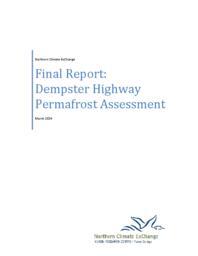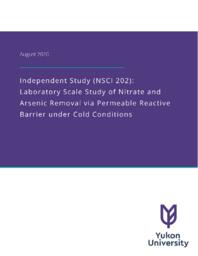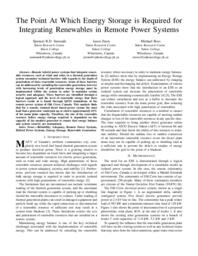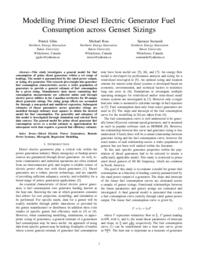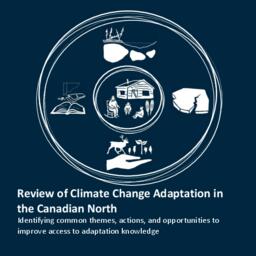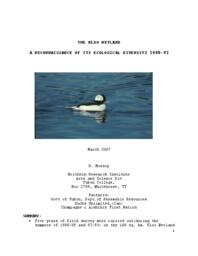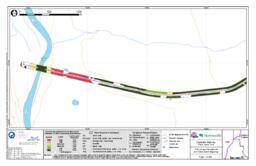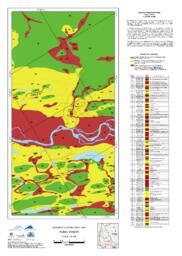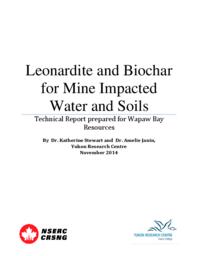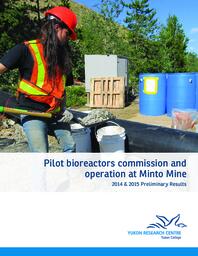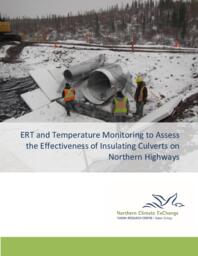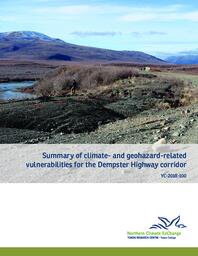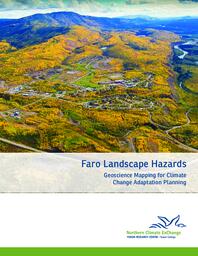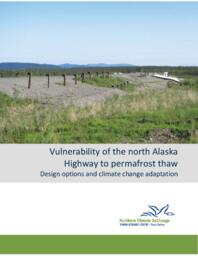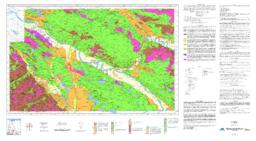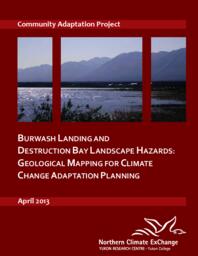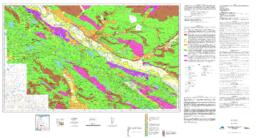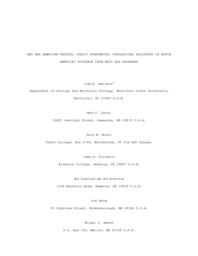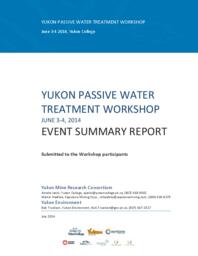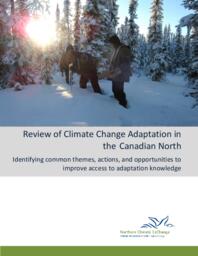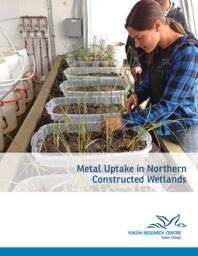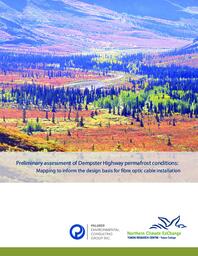Digital Document
Digital Document
The mine life cycle, from exploration to mine closure can be fast-paced and volatile, therefore careful consideration should be given to remediation planning of mine sites. Ensuring strategies are developed which are both cost effective, and…
Digital Document
Remote hybrid power systems that integrate renewable resources, such as wind and solar, in a thermal generation system encounter technical barriers with regards to the depth of penetration of these renewable resources. Some of these barriers can be…
Digital Document
This study investigates a general model for fuel consumption of prime diesel generators within a set range of loadings. The model is parametrized by the rated power output, or sizing, of a generator. This research gives insight into generator fuel…
Digital Document
Canada’s North is changing rapidly. It is unique in terms of its relatively strong representation of indigenous people and variety of landscapes. This creates a unique context for climate change adaptation, both in terms of urgency (change is…
Digital Document
The Kloo Wetland is an area of approximately 100 sq. km. of just over 340 small to medium sized ponds and lakes associated with the floodplain of the Jarvis River in the South Western Yukon. It includes two larger lakes, Kloo and Sulphur, and is…
Digital Document
The overarching goal of this project was to implement a distributed hydrological modelling system to support hydroelectric production in Yukon under current and changing climate conditions. Building from previous collaboration between YU and YEC,…
Digital Document
Digital Document
In situ immobilization of metals using soil amendment processes is increasingly being considered as an effective and low cost remediation alternative (Mench et al. 2007, Kumpiene et al. 2008, Fellet et al. 2011). Leonardite is a carbon-rich material…
Digital Document
Four (4) pilot anaerobic bioreactors were commissioned at the Minto mine site in the summer of 2014 by Amelie Janin, NSERC Industrial Research Chair at Yukon College, and Capstone staff. Installation was completed on August 7th, 2014 and operation…
Digital Document
Heat transfer into the ground at highway culvert locations can lead to the thawing of permafrost, damaging infrastructure, shortening its lifespan, and increasing maintenance costs. The Dempster Highway in the northern Yukon experiences multiple…
Digital Document
The Dempster Highway is the only road connection to the western Arctic. Now connected with the Inuvik-Tuktoyaktuk Highway, it is part of the infrastructure linking southern Canada with the Arctic Ocean. Extensive reconstruction of the Dempster…
Digital Document
Climate change is a significant challenge for northern communities, where the impacts of a warming climate are already having considerable effects (Huntington and Weller, 2005). Many people living in small, isolated communities in northern Yukon are…
Digital Document
The Alaska Highway between Burwash Landing and the Yukon/Alaska border is underlain by extensive discontinuous, warm and frequently ice-rich permafrost. The disturbance caused by construction of the road and climate warming has already led to the…
Digital Document
Surficial Geology, Ross River Region, Yukon Parts of NTS 105K/1 & 2 and 105F/15 & 16 1:25 000 scale
Digital Document
This project investigates contemporary landscape hazards related to permafrost degradation in Burwash Landing and Destruction Bay, Yukon. It also considers potential impacts of a changing climate on the local landscape. The work is accomplished by…
Digital Document
Directory of community-based courses. The directory also outlines a five-step process for accessing college services.
Digital Document
Digital Document
Declines in American Kestrel (Falco sparverius) populations are widely reported, and Breeding Bird Survey (BBS) data suggest that the North American population declined significantly from 1984 to 2007. Potential factors include the spread of West…
Digital Document
The goal of Yukon Passive Water Treatment Workshop was to foster discussions between mines environmental personnel, regulators, project managers, consultants, design engineers, and other affected stakeholders to identify the gaps that need to be…
Digital Document
Throughout northern Canada, a variety of documents speaking to climate change adaptation have been published. These range from peer review articles over presentations, websites, and reports to online tools. This project represents an effort to tie…
Digital Document
Constructed wetlands (CWs) have been employed as passive treatment systems for metal contaminated mine drainage in Canada. However, relatively few CWs have been documented in northern environments and further studies are needed to understand the…
Digital Document
In cold climates such as central and northern Yukon, construction at a site must account for permafrost characteristics and implement design adaptations to ensure the resilience of the infrastructure, or risk costly repairs and interruption to…

